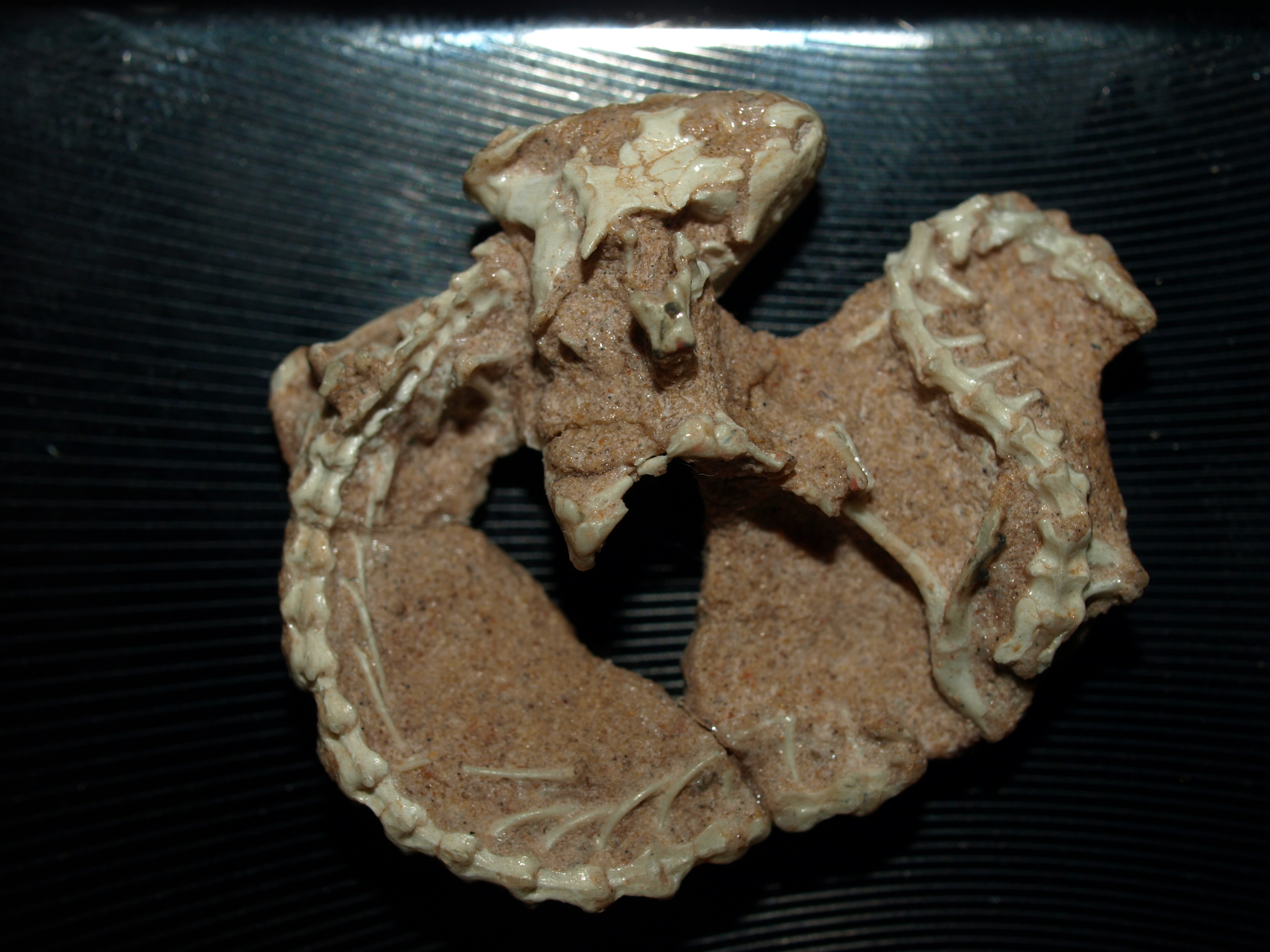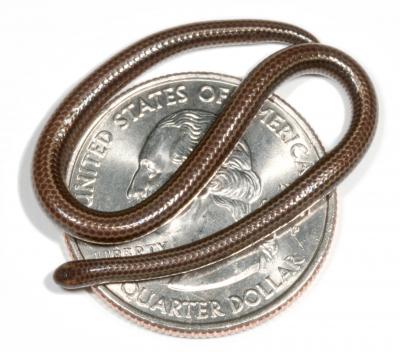|
Mental Scale
The mental scale, or mental, in snakes and other scaled reptiles refers to the median plate on the tip of the lower jaw.Wright AH, Wright AA. 1957. Handbook of Snakes. Comstock Publishing Associates (7th printing, 1985). 1105 pp. . It is a triangular scale that corresponds to the rostral of the upper jaw.Mallow D, Ludwig D, Nilson G. 2003. True Vipers: Natural History and Toxinology of Old World Vipers. Malabar, Florida: Krieger Publishing Company. . The reference to the term 'mental' comes from the mental nerve which addresses the chin and lower jaw in animals. In snakes, the shape and size of this scale is sometimes one of the characteristics used to differentiate species from one another. Related scales * Rostral scale * Labial scales See also * Snake scales * Anatomical terms of location Standard anatomical terms of location are used to unambiguously describe the anatomy of animals, including humans. The terms, typically derived from Latin or Greek roots, describe somethi ... [...More Info...] [...Related Items...] OR: [Wikipedia] [Google] [Baidu] |
Snakes
Snakes are elongated, limbless, carnivorous reptiles of the suborder Serpentes . Like all other squamates, snakes are ectothermic, amniote vertebrates covered in overlapping scales. Many species of snakes have skulls with several more joints than their lizard ancestors, enabling them to swallow prey much larger than their heads (cranial kinesis). To accommodate their narrow bodies, snakes' paired organs (such as kidneys) appear one in front of the other instead of side by side, and most have only one functional lung. Some species retain a pelvic girdle with a pair of vestigial claws on either side of the cloaca. Lizards have evolved elongate bodies without limbs or with greatly reduced limbs about twenty-five times independently via convergent evolution, leading to many lineages of legless lizards. These resemble snakes, but several common groups of legless lizards have eyelids and external ears, which snakes lack, although this rule is not universal (see Amphisbaenia, D ... [...More Info...] [...Related Items...] OR: [Wikipedia] [Google] [Baidu] |
Squamata
Squamata (, Latin ''squamatus'', 'scaly, having scales') is the largest order of reptiles, comprising lizards, snakes, and amphisbaenians (worm lizards), which are collectively known as squamates or scaled reptiles. With over 10,900 species, it is also the second-largest order of extant (living) vertebrates, after the perciform fish. Members of the order are distinguished by their skins, which bear horny scales or shields, and must periodically engage in molting. They also possess movable quadrate bones, making possible movement of the upper jaw relative to the neurocranium. This is particularly visible in snakes, which are able to open their mouths very wide to accommodate comparatively large prey. Squamata is the most variably sized order of reptiles, ranging from the dwarf gecko (''Sphaerodactylus ariasae'') to the Reticulated python (''Malayopython reticulatus'') and the now-extinct mosasaurs, which reached lengths over . Among other reptiles, squamates are most close ... [...More Info...] [...Related Items...] OR: [Wikipedia] [Google] [Baidu] |
Snake Scales
Snakes are elongated, limbless, carnivorous reptiles of the suborder Serpentes . Like all other squamates, snakes are ectothermic, amniote vertebrates covered in overlapping scales. Many species of snakes have skulls with several more joints than their lizard ancestors, enabling them to swallow prey much larger than their heads (cranial kinesis). To accommodate their narrow bodies, snakes' paired organs (such as kidneys) appear one in front of the other instead of side by side, and most have only one functional lung. Some species retain a pelvic girdle with a pair of vestigial claws on either side of the cloaca. Lizards have evolved elongate bodies without limbs or with greatly reduced limbs about twenty-five times independently via convergent evolution, leading to many lineages of legless lizards. These resemble snakes, but several common groups of legless lizards have eyelids and external ears, which snakes lack, although this rule is not universal (see Amphisbaenia, Dibamida ... [...More Info...] [...Related Items...] OR: [Wikipedia] [Google] [Baidu] |
Rostral Scale
The rostral scale, or rostral, in snakes and other scaled reptiles is the median plate on the tip of the snout that borders the mouth opening. Wright AH, Wright AA (1957). ''Handbook of Snakes of the United States and Canada''. Ithaca and London: Comstock Publishing Associates. (7th printing, 1985). 1,105 pp. (in two volumes). . It corresponds to the mental scale in the lower jaw. The term pertains to the rostrum, or nose. In snakes, the shape and size of this scale is one of many characteristics used to differentiate species from one another. Related scales *Nasorostral scale *Mental scale *Labial scales See also *Snake scales *Anatomical terms of location Standard anatomical terms of location are used to unambiguously describe the anatomy of animals, including humans. The terms, typically derived from Latin or Greek roots, describe something in its standard anatomical position. This position pro ... References {{Reflist Snake scales ... [...More Info...] [...Related Items...] OR: [Wikipedia] [Google] [Baidu] |
Mental Nerve
The mental nerve is a sensory nerve of the face. It is a branch of the posterior trunk of the inferior alveolar nerve, itself a branch of the mandibular nerve (CN V3), itself a branch of the trigeminal nerve (CN V). It provides sensation to the front of the chin and the lower lip, as well as the gums of the anterior mandibular (lower) teeth. It can be blocked with local anaesthesia for procedures on the chin, lower lip, and mucous membrane of the inner cheek. Problems with the nerve cause chin numbness. Structure The mental nerve is a branch of the posterior trunk of the inferior alveolar nerve. This is a branch of the mandibular nerve (CN V3), itself a branch of the trigeminal nerve (CN V). It emerges from the mental foramen in the mandible. It divides into three branches beneath the depressor anguli oris muscle. One branch descends to the skin of the chin. Two branches ascend to the skin and mucous membrane of the lower lip. These branches communicate freely with the facial ... [...More Info...] [...Related Items...] OR: [Wikipedia] [Google] [Baidu] |
Labial Scales
The labial scales are the scales of snakes and other scaled reptiles that border the mouth opening. These do not include the median scales on the upper and lower jawsWright AH, Wright AA. 1957. Handbook of Snakes. Comstock Publishing Associates (7th printing, 1985). 1105 pp. . (rostral and mental scales). The term ''labial'' originates from ''Labium'' (Latin for "lip"), which refers to any lip-like structure. In snakes, there are two different types of labial scales: supralabials and sublabials. The numbers of these scales present, and sometimes the shapes and sizes, are some of many characteristics used to differentiate species from one another. There are two different types of labial scales: * Supralabials are the scales that form part of the upper lip. Also called upper labials. * Sublabials are the scales that form part of the lower lip. Also called infralabials or lower labials. Related scales * Rostral scale: median scale on the tip of the snout bordering the mouth openi ... [...More Info...] [...Related Items...] OR: [Wikipedia] [Google] [Baidu] |
Anatomical Terms Of Location
Standard anatomical terms of location are used to unambiguously describe the anatomy of animals, including humans. The terms, typically derived from Latin or Greek roots, describe something in its standard anatomical position. This position provides a definition of what is at the front ("anterior"), behind ("posterior") and so on. As part of defining and describing terms, the body is described through the use of anatomical planes and anatomical axes. The meaning of terms that are used can change depending on whether an organism is bipedal or quadrupedal. Additionally, for some animals such as invertebrates, some terms may not have any meaning at all; for example, an animal that is radially symmetrical will have no anterior surface, but can still have a description that a part is close to the middle ("proximal") or further from the middle ("distal"). International organisations have determined vocabularies that are often used as standard vocabularies for subdisciplines of anatom ... [...More Info...] [...Related Items...] OR: [Wikipedia] [Google] [Baidu] |

